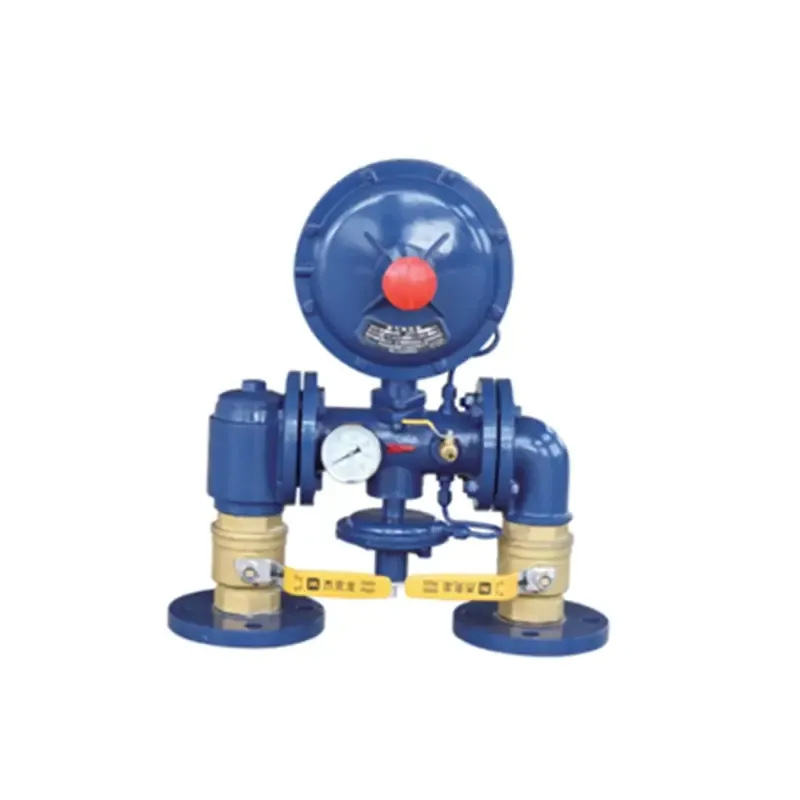
8 月 . 05, 2024 11:07
Back to list
Understanding the Importance of Pressure Regulators in Fluid Control Systems and Their Applications
Understanding Pressure Reducers Essential Components in Fluid Systems
In various fluid handling systems, maintaining optimal pressure levels is crucial for both safety and efficiency. One of the key components that ensure stable pressure within these systems is the pressure reducer. This device plays a vital role in a multitude of applications, including residential plumbing, industrial processes, and gas distribution systems.
What is a Pressure Reducer?
A pressure reducer, also known as a pressure regulator, is a mechanical device designed to control the pressure of a fluid, either gas or liquid, flowing through a system. Its primary function is to reduce the inlet pressure to a predetermined outlet pressure, ensuring a consistent and safe flow regardless of fluctuations in the upstream supply pressure. This functionality is crucial in applications where specific pressure levels must be maintained for optimal operation, such as in water irrigation systems, gas pipelines, and hydraulic machinery.
How Do Pressure Reducers Work?
The operational principle of a pressure reducer is relatively straightforward. When fluid enters the device, it encounters a diaphragm that responds to changes in pressure. As the inlet pressure increases, the diaphragm moves against a spring mechanism. Once the desired outlet pressure is reached, the diaphragm's movement compresses the spring, which in turn reduces the flow of the inlet fluid. This feedback loop ensures that the outlet pressure remains stable even when the incoming pressure varies.
Depending on the application, pressure reducers may also include additional components such as pressure gauges, vents, and safety relief valves to enhance their functionality and safety. For instance, a safety relief valve is critical in scenarios where excess pressure can lead to system failures or hazards.
Applications of Pressure Reducers
pressure reducer

The versatility of pressure reducers allows them to be employed in numerous sectors. In residential plumbing, for instance, they help regulate water pressure from municipal supply lines, preventing pipeline damage and ensuring consistent flow rates within the home. In industrial processes, pressure reducers are essential for maintaining optimal operating conditions in machinery and equipment, which can vary depending on the type of fluid being processed.
Similarly, in gas distribution systems, pressure reducers ensure that gas is delivered at safe levels to appliances, thereby minimizing the risk of leaks or explosions. This application is particularly crucial in facilities like hospitals and restaurants, where reliable gas flow is essential for both safety and operational efficiency.
Benefits of Using Pressure Reducers
Incorporating pressure reducers into fluid systems offers several benefits. Firstly, they enhance safety by preventing overpressure situations that could damage equipment or pose hazards to personnel. Secondly, they improve efficiency by maintaining optimum operating conditions, thereby minimizing waste and reducing energy costs. Thirdly, they extend the lifecycle of downstream equipment by protecting it from high-pressure shocks.
Moreover, they facilitate compliance with regulatory standards, which often mandate specific pressure levels for various systems to ensure safe operations.
Conclusion
In summary, pressure reducers are indispensable components in fluid systems that play a vital role in maintaining safety, efficiency, and equipment longevity. Their ability to control and stabilize pressure makes them essential in various applications, from residential plumbing to industrial processes and gas distribution. As industries continue to evolve, the role of pressure reducers will remain pivotal in ensuring that systems operate smoothly and safely, safeguarding both equipment and personnel in the process. Understanding how these devices work and their applications can help users optimize their fluid handling systems and achieve better results.
Latest news
-
Unlocking The Quality Gas Pressure ReducersNewsNov.01,2024
-
The Role of Gas Pressure Reducing StationsNewsNov.01,2024
-
The Importance and Functionality of Safety Relief ValvesNewsNov.01,2024
-
The Essential Role of Safety Valves in Natural Gas ApplicationsNewsNov.01,2024
-
The Essential Role of Gas Pressure RegulatorsNewsNov.01,2024
-
Enhance Your Premium Gas FiltersNewsNov.01,2024

